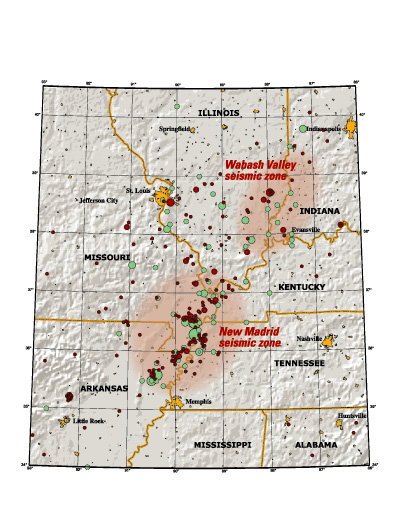|
Evidence that earthquakes threaten the Mississippi, Ohio, and Wabash River valleys of the Central United States abounds. In fact, one of the largest historical earthquakes to strike the continental United States occurred in the winter of 1811-1812 along the New Madrid seismic zone, which stretches from just west of Memphis, Tennessee, into southern Illinois. Several times in the past century, moderate earthquakes have been widely felt in southern Illinois and southwestern Indiana. Geologic evidence for prehistoric earthquakes throughout the region has been mounting since the late 1970s. But how significant is the threat? How likely are large earthquakes and, more importantly, what is the chance that the shaking they cause will be damaging? Like many natural phenomena, how an earthquake affects people depends on many factors. Studying earthquakes is especially challenging because they happen infrequently and withoutany advanced warning. Also, the processes that cause earthquakes work over many thousands of years and deep beneath the Earth’s surface. Nonetheless, research during the last 15 years has led to new understanding, particularly with respect to earthquakes in the New Madrid seismic zone. Not surprisingly, as the understanding of earthquakes evolves, so do the estimates of the hazard that they pose. |
This map of the New Madrid and Wabash Valley seismic zones shows earthquakes as circles. Red circles indicate earthquakes that occurred from 1974 to 2002 with magnitudes larger than 2.5 located using modern instruments (University of Memphis). Green circles denote earthquakes that occurred prior to 1974 (USGS Professional Paper 1527). Larger earthquakes are represented by larger circles.
